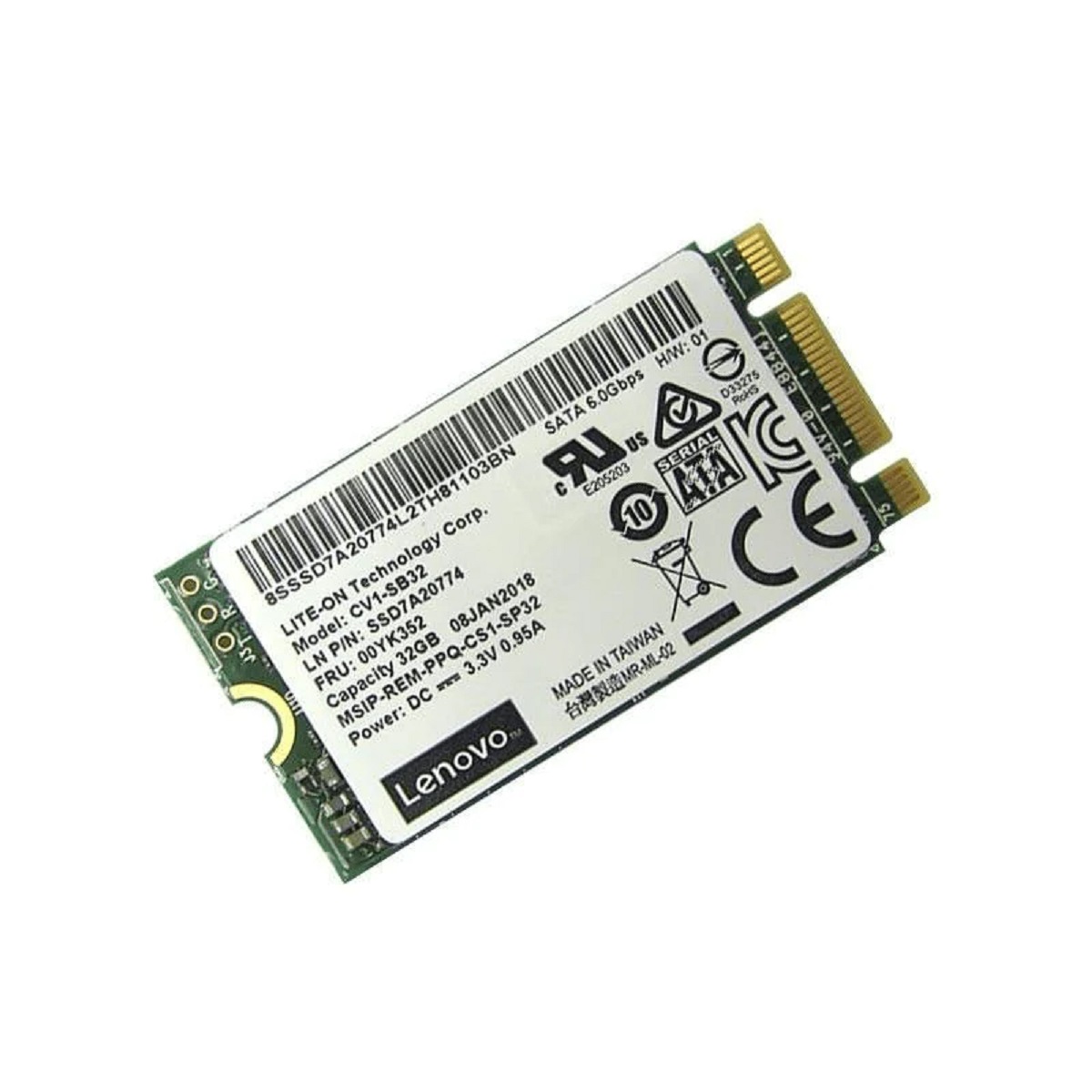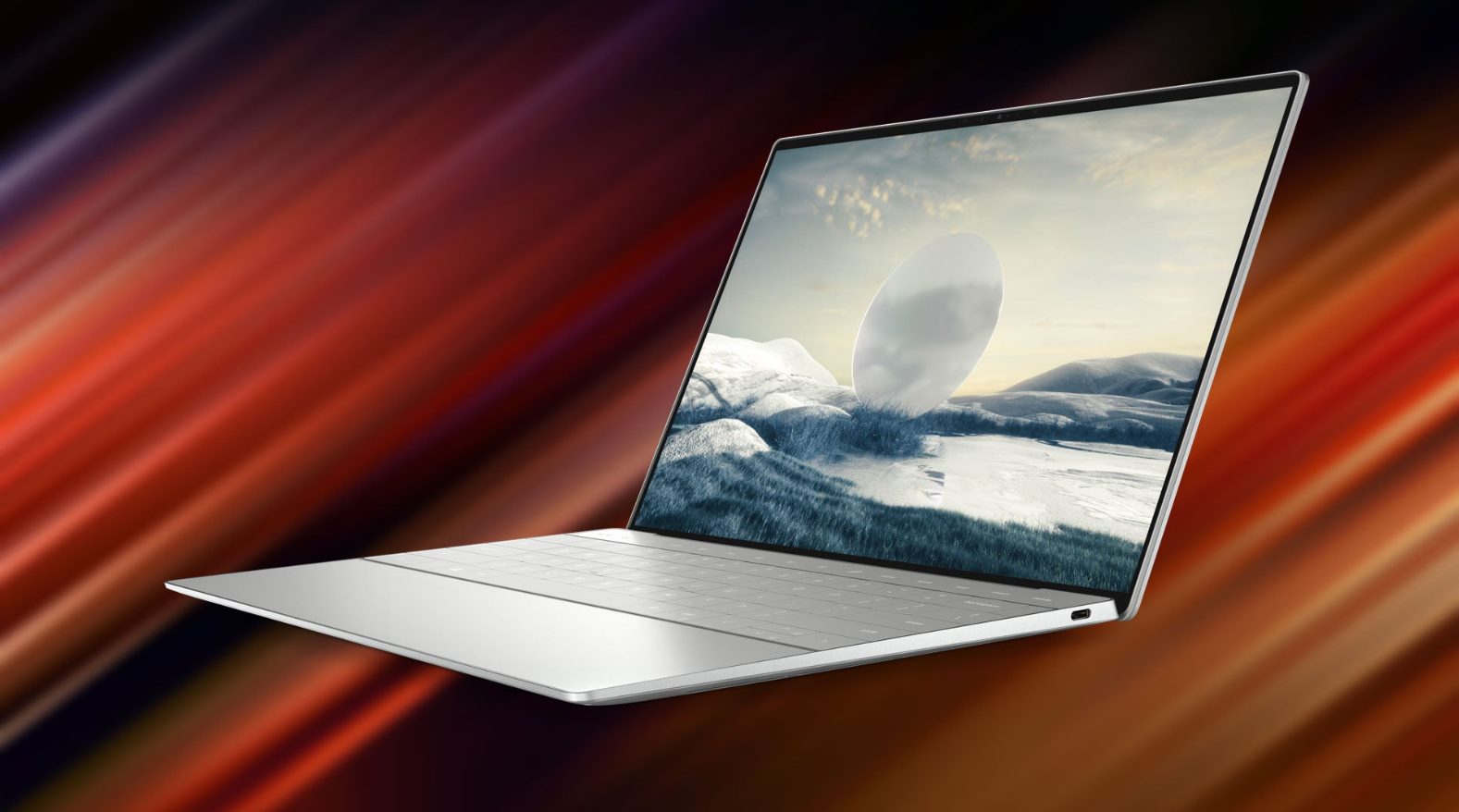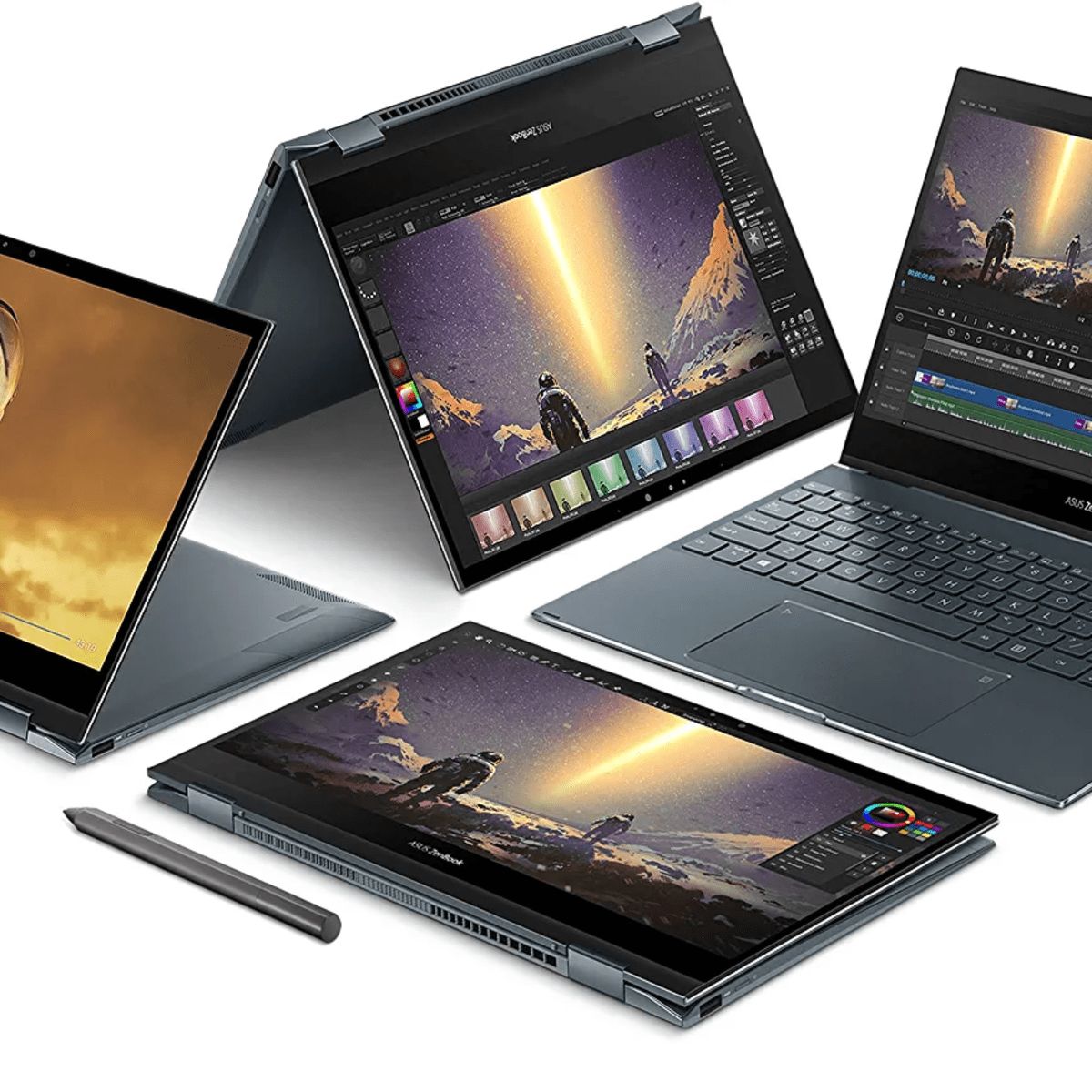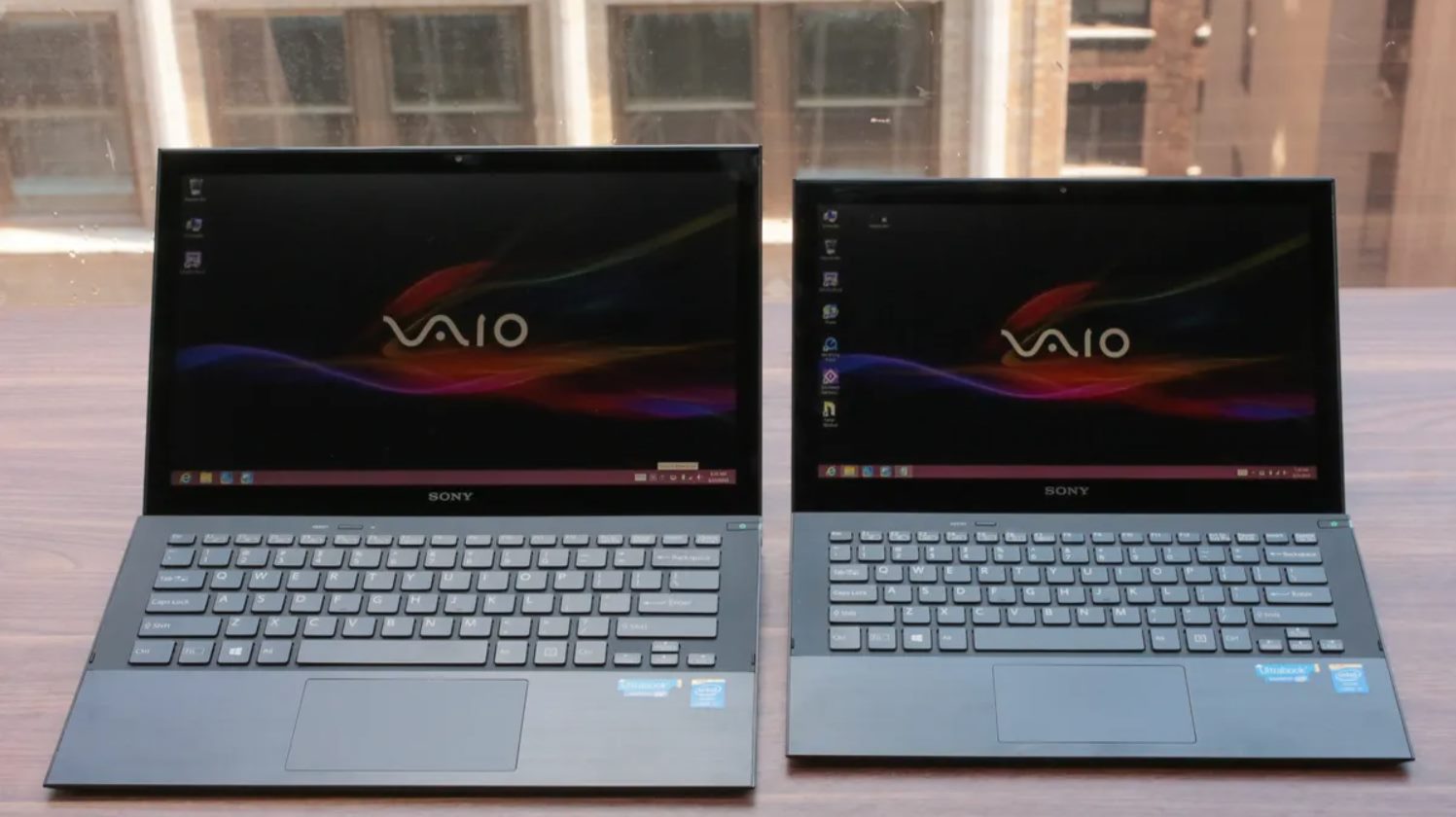Introduction
Welcome to the world of solid state drives (SSDs), where fast and efficient storage solutions take center stage. If you’re considering upgrading your storage capacity, you may have come across the term “32GB eMMC SSD.” But what exactly is it?
First things first, let’s break it down. “eMMC” stands for Embedded MultiMediaCard, which refers to a type of solid state storage commonly found in laptops, tablets, smartphones, and other compact devices. The “32GB” indicates the storage capacity of the eMMC SSD, which is 32 gigabytes.
An eMMC SSD differs from traditional SSDs in terms of construction and functionality. While a typical SSD is a separate drive that connects to the computer internally or via an external enclosure, an eMMC SSD is directly soldered onto the device’s motherboard. This integration makes it a popular choice for compact devices, where space is limited.
In this article, we will delve deeper into the world of 32GB eMMC SSDs and explore their advantages, disadvantages, and common uses. We will also highlight the differences between eMMC SSDs and other types of SSDs, helping you make an informed decision when selecting the right storage solution for your needs.
What is a 32GB eMMC Solid State Drive?
A 32GB eMMC solid state drive (SSD) is a type of embedded storage solution that offers a compact and efficient way to store data. As mentioned earlier, eMMC stands for Embedded MultiMediaCard, indicating that it is a form of flash storage commonly used in compact devices like laptops, tablets, and smartphones.
The 32GB capacity refers to the amount of storage space available on the eMMC SSD. While 32 gigabytes may seem modest compared to larger SSDs or traditional hard drives, it is still sufficient for basic storage needs such as storing documents, photos, videos, and a limited number of applications.
eMMC SSDs are designed with a small form factor and are directly soldered onto the device’s motherboard. This integration eliminates the need for a separate drive enclosure and allows for a more compact and lightweight design. This makes eMMC SSDs ideal for portable devices where space is at a premium.
Unlike traditional SSDs, which use NAND or NOR flash memory, eMMC SSDs use a different type of flash memory technology called eMMC NAND. This technology offers a cost-effective solution by combining the flash memory, a controller, and error correction code (ECC) into a single chip. This integrated design maximizes space efficiency and reduces the cost of production.
Despite its compact size and limited capacity, a 32GB eMMC SSD still provides significant benefits over traditional hard drives. The use of flash memory allows for faster read and write speeds, resulting in improved system responsiveness and shorter boot times. Additionally, eMMC SSDs are more resistant to shock and vibration, making them more durable for portable devices.
Overall, a 32GB eMMC SSD offers a reliable and efficient storage solution for compact devices. While it may not be suitable for power users or those with extensive storage needs, it is perfect for individuals who prioritize portability and performance in their devices.
How does eMMC work?
eMMC (Embedded MultiMediaCard) works by utilizing a combination of flash memory and a controller to provide a compact and efficient storage solution. Unlike traditional SSDs that have separate memory chips and controllers, eMMC integrates both components into a single chip.
The flash memory used in eMMC is based on NAND (Not AND) technology, which allows for high-density storage with a lower cost per gigabyte. This type of flash memory is non-volatile, meaning it retains data even when the power is disconnected. This is crucial for maintaining the integrity of the stored data.
The controller in an eMMC SSD plays a vital role in managing the retrieval and storage of data. It acts as the bridge between the flash memory and the device’s operating system, ensuring efficient data transfer and access. The controller also handles wear leveling, error correction, and encryption, enhancing the overall performance and reliability of the eMMC SSD.
When data is written to an eMMC SSD, it is divided into chunks called “pages” and stored in the flash memory. The pages are grouped together to form “blocks,” which are the minimum erasable units of the eMMC. To prevent excessive wear on specific blocks, wear leveling algorithms distribute the data evenly across the entire SSD, ensuring consistent performance and extending the lifespan of the drive.
When retrieving data from an eMMC SSD, the controller identifies the location of the requested information and retrieves it from the appropriate flash memory cells. The controller then sends the data to the device’s operating system, which can access it as needed.
Overall, eMMC works by integrating flash memory and a controller into a single chip, providing a compact and efficient storage solution. Its seamless integration and advanced algorithms ensure reliable data storage and retrieval, making it a popular choice for compact devices where space and performance are crucial factors.
Advantages of a 32GB eMMC SSD
A 32GB eMMC SSD offers several advantages that make it a compelling choice for certain use cases. While it may not have the capacity or performance of larger SSDs, it does provide specific benefits that make it suitable for certain applications and devices.
1. Compact Size: One of the main advantages of a 32GB eMMC SSD is its compact size. Being directly soldered onto the motherboard, it takes up minimal space, making it ideal for devices with limited internal storage options or slim designs like ultrabooks or tablets. Its small form factor allows for more flexibility in device design and portability.
2. Energy Efficiency: eMMC SSDs are known for their energy efficiency. They require less power to operate compared to traditional hard drives, resulting in improved battery life for portable devices. This makes them an excellent choice for laptops, tablets, and other battery-powered devices where power consumption is a critical factor.
3. Durability: eMMC SSDs are more resistant to shock and vibration compared to traditional hard drives. Without any moving parts, they are less prone to physical damage, making them more reliable for portable devices that may experience frequent movement or rough handling. This durability is especially important for applications in industries such as healthcare, automotive, and aerospace where ruggedness is crucial.
4. Fast Boot and Load Times: The use of flash memory technology in eMMC SSDs allows for faster boot times and application load times compared to traditional hard drives. This results in quicker system responsiveness and improved user experience. Devices equipped with eMMC SSDs will start up faster and allow users to access their applications and files more efficiently.
5. Cost-Effective Storage Solution: For users with basic storage needs, a 32GB eMMC SSD provides a cost-effective solution. It offers enough storage space to store essential documents, photos, and a limited number of applications without breaking the bank. This makes it an excellent choice for budget-conscious consumers or for devices used in specific applications where extensive storage capacity is not required.
While a 32GB eMMC SSD may not be suitable for power users or those with large storage requirements, its compact size, energy efficiency, durability, fast performance, and cost-effectiveness make it an attractive option for certain devices and applications. Evaluating your storage needs and considering these advantages will help you determine if a 32GB eMMC SSD is the right choice for you.
Disadvantages of a 32GB eMMC SSD
While a 32GB eMMC solid state drive (SSD) offers several advantages, it also comes with a few limitations that potential buyers should consider. Understanding these disadvantages will help you make an informed decision when selecting storage solutions for your specific needs.
1. Limited Storage Capacity: The most apparent disadvantage of a 32GB eMMC SSD is its limited storage capacity. With only 32 gigabytes available, it may not be sufficient for users with extensive storage needs. This means you will have to carefully manage your files and applications or offload data to external storage devices to prevent running out of space.
2. Limited Room for Growth: Another drawback is the limited room for future growth. As technology advances and file sizes increase, the 32GB capacity may quickly become restrictive. It may not be able to accommodate larger software updates, high-resolution media files, or other data-intensive applications. If you anticipate a need for more storage in the future, you might want to consider larger SSD options.
3. Reduced Performance: While eMMC SSDs offer faster performance compared to traditional hard drives, they are generally slower than higher-end SSDs. The limited storage capacity of a 32GB eMMC SSD may further impact its performance. As the drive approaches its maximum capacity, read and write speeds can be noticeably slower, affecting overall system responsiveness.
4. Limited Compatibility: eMMC SSDs are primarily designed for compact devices like laptops, tablets, and smartphones. They may not be compatible with desktop PCs or systems that require a standard SATA interface. It is important to check the specifications and compatibility of the eMMC SSD before purchasing to ensure it will work with your specific device.
5. Upgrading Difficulties: The integrated nature of eMMC SSDs makes upgrading or replacing them more challenging. Unlike traditional SSDs that can be easily swapped out or upgraded, eMMC SSDs require specialized tools and knowledge to access and replace. This means that if you outgrow the 32GB capacity or experience drive failure, you may need professional assistance to replace or upgrade the storage.
While a 32GB eMMC SSD may not meet the needs of power users or those with extensive storage requirements, for users who prioritize portability, energy efficiency, and cost-effectiveness, it can still be a viable option. Understanding the limitations and considering your specific storage needs will help you determine if a 32GB eMMC SSD is the right choice for you.
Common uses for a 32GB eMMC SSD
A 32GB eMMC solid state drive (SSD) finds its best application in specific use cases that require compact storage solutions with efficient performance. While it may not be suitable for all storage needs, there are several common uses where a 32GB eMMC SSD excels.
1. Portable Devices: The compact size and energy efficiency of a 32GB eMMC SSD make it ideal for portable devices such as laptops, tablets, and 2-in-1 convertibles. These devices prioritize lightweight designs and longer battery life, and the small form factor of an eMMC SSD allows for achieving these goals. It provides reliable storage for essential documents, multimedia files, and lightweight software applications.
2. Embedded Systems: Many embedded systems and Internet of Things (IoT) devices rely on eMMC SSDs due to their durability and space-saving advantages. These devices include smart TVs, digital signage, industrial control systems, and medical devices. The eMMC SSD offers a reliable storage solution in harsh environments while maintaining high performance.
3. Chromebooks and Budget Laptops: Chromebooks and budget laptops often come equipped with smaller capacity SSDs due to cost considerations. A 32GB eMMC SSD is suitable for these devices, especially for users who primarily use cloud storage or have light storage needs. It allows for quick system boot times and access to web-based apps while still providing enough local storage space for essential files and applications.
4. Education Sector: In the education sector, especially in schools where budget and durability are crucial factors, eMMC SSDs are commonly used. Chromebooks, which are popular in educational institutions, often come with 32GB eMMC SSDs. These devices provide sufficient storage space for educational materials, assignments, and basic software applications needed for learning.
5. Digital Signage and Kiosks: Digital signage displays and kiosks rely on eMMC SSDs for reliable and efficient storage. These devices often require a compact form factor and the ability to handle continuous data playback and frequent content updates. A 32GB eMMC SSD can store multimedia content, interactive applications, and system software necessary for smooth operation.
While a 32GB eMMC SSD may not fit the needs of power users or those with extensive storage requirements, it is well-suited for portable devices, embedded systems, budget laptops, and specific industry applications. Evaluating your specific use case and storage requirements will help you determine if a 32GB eMMC SSD is the right choice for you.
Differences between eMMC and other types of SSDs
eMMC (Embedded MultiMediaCard) SSDs differ from other types of SSDs in various ways. Understanding these differences is crucial in determining which type of SSD is best suited for your specific needs. Let’s explore the key distinctions between eMMC SSDs and other SSD technologies.
1. Form Factor and Integration: One of the main differences is the form factor and integration. eMMC SSDs are soldered directly onto the device’s motherboard, while other SSDs, such as SATA or NVMe SSDs, come in standard 2.5-inch or M.2 form factors. This integration allows eMMC SSDs to be much smaller and more suitable for compact devices where space is limited.
2. Performance: While eMMC SSDs provide faster performance compared to traditional hard drives, they are generally slower than other types of SSDs. SATA and NVMe SSDs offer higher read and write speeds, making them more suitable for demanding tasks that require high performance, such as gaming, video editing, or rendering large files.
3. Capacity Options: eMMC SSDs typically offer lower capacity options compared to other SSDs. For example, a 32GB eMMC SSD is common, but SATA and NVMe SSDs can offer capacities ranging from 256GB to multiple terabytes. This difference in capacity makes eMMC SSDs more suitable for lightweight usage and basic storage needs.
4. Upgradability: Upgradability is another distinction between eMMC SSDs and other SSDs. eMMC SSDs are often not designed to be upgraded or replaced easily, as they are soldered onto the device’s motherboard. In contrast, SATA and NVMe SSDs can be easily removed and replaced with higher capacity models or faster alternatives, making them more flexible for future upgrades.
5. Price: eMMC SSDs are generally more cost-effective compared to other SSDs. Their integrated design and limited capacity options help reduce production costs. SATA and NVMe SSDs, on the other hand, offer higher performance and larger capacities, but at a higher price point. The choice between eMMC and other SSDs depends on balancing performance requirements with budgetary constraints.
Ultimately, the differences between eMMC SSDs and other types of SSDs lie in their form factor, performance, capacity options, upgradability, and price. Consider your specific usage requirements, such as portability, performance needs, and storage demands, to determine the most suitable SSD technology for your particular use case.
How to choose the right 32GB eMMC SSD for your needs
When selecting a 32GB eMMC solid state drive (SSD), there are several factors to consider to ensure that it meets your specific requirements. While the capacity is fixed at 32GB, there are still important considerations that can impact performance, compatibility, and reliability. Here are some key points to keep in mind when choosing the right 32GB eMMC SSD:
1. Brand Reputation and Reliability: Opt for well-established and reputable brands when choosing an eMMC SSD. Look for brands known for their reliability and longevity. Reading online reviews and user ratings can also provide insights into the reliability and performance of different models.
2. Performance Considerations: Although eMMC SSDs are generally slower than higher-end SSDs, it’s still essential to consider their performance. Look for eMMC SSDs with faster read and write speeds for improved system responsiveness. Consider a device with a faster eMMC interface, such as eMMC 5.1 or eMMC 5.2, which can offer better performance compared to older versions.
3. Compatibility: Ensure that the 32GB eMMC SSD you choose is compatible with your device. Check the specifications of your device and the SSD to ensure they are a match. Pay attention to the form factor, interface, and connector type. Some devices may require specific types of eMMC SSDs, such as eMMC BGA or eMMC LGA, so compatibility is crucial.
4. Endurance and Longevity: Consider the expected lifespan and endurance of the eMMC SSD. Look for SSDs that offer high endurance ratings, as this indicates how many program/erase (P/E) cycles the SSD can endure. Higher endurance SSDs tend to have a longer lifespan, making them a more reliable choice for long-term usage.
5. Warranty and Support: Check the warranty provided by the manufacturer and the level of customer support offered. A longer warranty period indicates confidence in the quality of the product. Additionally, having access to reliable customer support in case of any issues or concerns can be invaluable.
6. Price: Compare prices among different brands and models to ensure you are getting the best value for your money. Consider your budget and balance it with the desired features and performance. Keep in mind that cheaper options may sacrifice certain aspects such as performance or endurance.
By considering brand reputation, performance, compatibility, endurance, warranty, and price, you can choose the right 32GB eMMC SSD that fits your needs. Take the time to research and compare different models to ensure that you make a well-informed decision.
Conclusion
In conclusion, a 32GB eMMC solid state drive (SSD) offers a compact and efficient storage solution for devices with limited space and storage needs. While it may not provide the capacity and performance of larger SSDs, it has specific advantages that make it suitable for certain applications and devices.
eMMC SSDs are directly soldered onto a device’s motherboard, making them ideal for portable devices like laptops, tablets, and smartphones. Their small form factor allows for slim designs and enhanced portability. Additionally, eMMC SSDs are energy-efficient, providing longer battery life for portable devices.
Furthermore, a 32GB eMMC SSD is cost-effective, making it suitable for budget-conscious consumers, education institutions, and specific industry applications. It offers sufficient storage space for basic files and applications without breaking the bank.
However, there are a few drawbacks to consider. The limited storage capacity and reduced performance may not meet the needs of power users or those with extensive storage requirements. Additionally, the integrated design of eMMC SSDs makes them less upgradable and replaceable compared to other SSD options.
When choosing a 32GB eMMC SSD, consider brand reputation, performance, compatibility, endurance, warranty, and price. Doing thorough research and comparing different models will ensure that you select the right SSD that meets your specific requirements.
In summary, a 32GB eMMC SSD provides a reliable and efficient storage solution for compact devices with basic storage needs. Whether you’re looking to upgrade your laptop, tablet, or other portable device, or seeking a cost-effective storage solution for specific applications, a 32GB eMMC SSD can be a suitable choice.

























